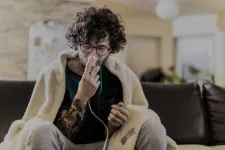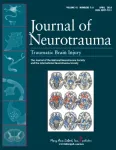(Press-News.org) Some teenage girls are clocking up close to 6 hours a day on their smartphones, with a significant proportion of them likely addicted to social media, finds research published online in the journal Archives of Disease in Childhood.
Social media addiction was associated with poorer health and wellbeing, the findings indicate.
Recent research has linked increasing levels of anxiety among teen girls with social media use, note the researchers. This may involve several factors, one of which is addiction, with estimated international prevalence ranging from 5% to 31%, they add.
Because both anxiety and social media use are more common among girls, the researchers wanted to: measure objectively the time teen girls spend on their smartphones and especially social media; measure possible social media addiction using a validated scale; and estimate the associations between social media use and addiction with wellbeing.
They therefore contacted all 49 high schools in 3 large cities in Finland: Helsinki; Espoo; and Vantaa. In all, 21 geographically and socioeconomically diverse schools, attended by 1164 female students aged 15-16, chose to participate.
These pupils represented 59% of female high school students in the participating high schools and just over 29% of all female high school students in the study area.
All the teenagers were asked to estimate their daily smartphone use. And of the 656 (56%) who supplied smartphone information, 564 (86%) had 3-7 days of screenshot data including an average of 7 apps; the remainder (92) had just 1-2 days of screenshot data that didn’t include apps.
Some 508 (44%) didn’t supply screenshot data, but were included in the analyses of possible addiction and wellbeing.
From the screenshots, the researchers recorded the number of days with screen time data available, daily smartphone pickups, type of most frequently used apps, and time spent using each of them.
Total screen time was then divided by the number of days to arrive at average daily screen time. Similarly, total app use time was divided by the number of days with data available to find the average daily time spent on different activities.
The Bergen Social Media Addiction Scale (BSMAS) was used to measure possible addiction. Total scores range from 6 to 30, with the higher the score the greater the possibility of addiction. The BSMAS developers suggest that scoring ‘often’ or ‘very often’----that is, 4 or 5 points—on at least 4 of the 6 included items indicates addiction.
Other validated scales were used to measure anxiety and body appreciation, while the teens rated their current health, mood, tiredness, and loneliness on visual analogue scales from 0 to 100, to measure general wellbeing.
Average daily smartphone use, based on at least 3 days of data, was available for 656 teens (56.5%), and for 7 days of data, for 298 (26%). This added up to 350 minutes, or 5.8 hours, with the average time spent on social media, 231 minutes, or 3.9 hours.
The teenagers estimated that they spent 5.2 hours a day on their smartphones.
No significant difference was found between weekdays or weekends or between data based on 3 to 6 or 7 days of use.
Detailed data on the most frequently used apps was available for 564 teens (48.5% of the total). In all, 205 (just over 36.3% of those with available data) spent less than 3 hours/day on social media while 77 (14%) spent 6 or more hours on it.
Data on the frequency of smart phone pick-ups was only available for 74 participants (13%). These ranged from 58 to 356 times/day (average 145). For around 1 in 5 (115; 20.5%) the most frequently used apps included games, which were played for an average of 24 minutes daily.
Based on the BSMAS scores, 183 (17%) teens were possibly addicted to social media. And over a third (371; 37%) scored above the cut-off for potential anxiety disorder.
Daily time spent on social media was associated with lower grade point average, higher social media addiction scores, higher levels of anxiety, and poorer body image.
And social media addiction scores were associated with higher levels of anxiety, poorer body image, poorer health, lower mood, more tiredness and greater feelings of loneliness.
This is an observational study, and as such no firm conclusions can be drawn about causal factors. The researchers also note that as they had no exclusion criteria, some of their study participants may have already had mental health issues. And less than half of the study participants sent screenshot data.
But they nevertheless conclude: “Although we report results from a cross-sectional setting, the implications of nearly 6 hours of daily smartphone use and its associations with adolescent wellbeing are serious.
“While some advocate for increased mental health services to tackle the rise in adolescent anxiety, no services will suffice unless the root causes are addressed.
“Policymakers should strengthen safety standards and urge technology companies to prioritise safety and health in the development of social media.”
END
Some teen girls clocking up close to 6 smartphone hours/day, Finnish study finds
Proportion may be ‘addicted’ to social media and have poorer mental health and wellbeing
2024-05-22
ELSE PRESS RELEASES FROM THIS DATE:
Pedestrians may be twice as likely to be hit by electric/hybrid cars as petrol/diesel ones
2024-05-22
Pedestrians may be twice as likely to be hit by an electric or hybrid car as those powered by petrol or diesel, finds a study of 2013-17 casualty rates in Great Britain, and published online in the Journal of Epidemiology & Community Health.
The risk is greater in urban areas, and governments must take steps to mitigate this safety hazard as they proceed to phase out fossil fuelled vehicles to improve air quality and curb climate change, urge the researchers.
Road traffic injuries are the leading cause of death for children and young people, and 1 in 4 road traffic deaths are of pedestrians, they note.
Amid ...
Scientists create tailored drug for aggressive breast cancer
2024-05-22
Scientists have used breast cancer cells’ weakness against themselves by linking a tumour-selective antibody with a cell-killing drug to destroy hard-to-treat tumours.
The research, published today in Clinical Cancer Research by a team from King’s College London and funded by Breast Cancer Now, marks a new method in cancer treatment.
The discovery is particular to triple negative breast cancer, which makes up 15% of all diagnosed breast cancer. This type of breast cancer is typically aggressive, resistant to chemotherapy, has a lower survival rate and is more common in women under 40.
Usual treatment involves surgery, chemotherapy ...
Language change harms our ability to communicate and understand
2024-05-22
EMBARGO: WEDNESDAY 22 MAY, 00:01 BST (TUESDAY 21 MAY, 19:01 ET).
Changes to the definitions of conceptual words like ‘woke’ and ‘gaslighting’ are harming our ability to communicate and understand our experiences, a Leeds academic argues.
In a new paper published in The Philosophical Quarterly journal, an ethicist at the University of Leeds has coined a term for the harm caused when language change leaves us lost for words.
Words such as ‘woke’, ‘depression’, ...
Jamestown Colony residents ate dogs with Indigenous ancestry
2024-05-22
Dogs with Indigenous ancestry were eaten during a period of starvation at Jamestown, the first English settlement in North America in the 17th century, according to new research in American Antiquity, published by Cambridge University Press on behalf of the Society for American Archaeology.
This discovery changes historians’ understanding of how Indigenous communities negotiated their relationship with rising colonial powers during this period. It also suggests that early European colonists depended on local Indigenous communities for their very survival, especially during the initial settlement period.
Researchers analysed ancient mitochondrial DNA from archaeological dogs from Jamestown ...
Australian study proves ‘humans are planet’s most frightening predator’
2024-05-22
Australia lacks fearsome large carnivores like lions and wolves, and the relative lack of fear that marsupials like kangaroos and wallabies show to dogs (and other introduced carnivores) has been attributed to a lack of evolutionary experience with large mammalian predators. This, however, overlooks the 50,000-year-long presence in Australia of the world’s most fearsome predator – the human ‘super predator.’
A new study conducted by Western University biology professor Liana Zanette, in collaboration with Calum ...
New York Valves 2024 late-breaking clinical trials and science announced
2024-05-22
NEW YORK – May 21, 2024 – The Cardiovascular Research Foundation® (CRF®) has announced New York Valves: The Structural Heart Summit will feature 12 Late-Breaking Clinical Trials and Science presentations. New York Valves 2024, the expanded iteration of our renowned annual Transcatheter Valve Therapy (TVT®) conference, will take place June 5-7, 2024, at the Jacob K. Javits Convention Center, North in New York City.
For nearly two decades, CRF® has led the way in pioneering transcatheter therapies for structural heart ...
Few moderate or severe asthma patients prescribed recommended inhaler regimen
2024-05-22
EMBARGOED UNTIL: 2:15 p.m. PT, May 21, 2024
Session: C94 - Asthma Quality Improvement, Health Services Research, and Disparities
Utilization of Single Maintenance and Reliever Therapy (SMART) for Moderate and Severe Asthma
Date and Time: Tuesday, May 21, 2024, 2:15 p.m.
Location: San Diego Convention Center, Room 28A-B (Upper Level)
ATS 2024, San Diego – Only 14.5 percent of adult patients with moderate or severe asthma are prescribed the recommended SMART combination inhaler regimen and over 40 percent of academic pulmonary and allergy clinicians have not adopted this optimal therapy, according to research published ...
A new way to fight an aggressive cancer in dogs
2024-05-22
Hemangiosarcoma is a common and aggressive type of cancer in dogs that arises from blood vessel cells and spreads very quickly, throughout the body, frequently affecting the spleen, liver, heart and muscles, among other organs.
“Because this type of cancer comes from blood vessels, it is common for these tumors to suddenly cause massive bleeding into the abdomen or chest,” says Heather Gardner, D.V.M., Ph.D., DACVIM (Oncology), GBS20. “Often when a dog is diagnosed, it is an emergency due to the blood loss associated with tumor rupture. They can have other problems related to hemangiosarcoma, such as lethargy, weakness, and ...
Jaboticaba peel reduces inflammation and controls blood sugar in people with metabolic syndrome
2024-05-21
The skin or peel of the Jaboticaba berry (Plinia jaboticaba), a native of the Brazilian Atlantic Rainforest, is usually thrown away because of its astringency (due to an abundance of mouth-puckering tannins), yet it can be a powerful ally in the treatment of obesity and metabolic syndrome, according to an article published in the journal Nutrition Research.
Conducted by researchers at the State University of Campinas (UNICAMP) in São Paulo state (Brazil), the study showed that inflammation and blood sugar levels improved in volunteers with obesity and metabolic syndrome who took 15 g per day of powdered jaboticaba peel as a dietary supplement for five weeks.
“The ...
Acute pseudoaneurysms following head gunshot wounds
2024-05-21
New Rochelle, NY, May 21, 2024—A new study in the peer-reviewed Journal of Neurotrauma contends that a significant fraction of traumatic intracranial aneurysms (TICAs) is missed on initial contrasted scans of patients suffering a civilian gunshot wound to the head (cGSWH). The study was designed to characterize acute TICAs using admission CT angiography (aCTA). Click here to read the article now.
The study showed that the presence of an intracerebral hematoma was the main predictor of TICA in cGSWH. Larger intracerebral hematomas in patients with cGSWH suggest hidden TICAs.
“When CTA was performed acutely, TICAs were ...
LAST 30 PRESS RELEASES:
General intelligence framework to predict virus adaptation based on a genome language model
Antibiotic resistance is ancient, ecological, and deeply connected to human activity, new review shows
Vapes, pouches, heated tobacco, shisha, cigarettes: nicotine in all forms is toxic to the heart and blood vessels
From powder to planet: University of Modena engineers forge a low-carbon future for advanced metal manufacturing
Super strain-resistant superconductors
Pre-school health programme does not improve children’s diet or physical activity, prompting call for policy changes, study finds
Autumn clock change linked to reduction in certain health conditions
AI images of doctors can exaggerate and reinforce existing stereotypes
Where medicine meets melody – how lullabies help babies and parents in intensive care
We may never be able to tell if AI becomes conscious, argues philosopher
AI video translation shows promise but humans still hold the edge
Deep ocean earthquakes drive Southern Ocean’s massive phytoplankton blooms, study finds
Without campus leftovers to pick through, the beaks of this bird changed shape during the pandemic
High-dose antibiotic does not reduce mortality in tuberculous meningitis
How many insects fly in the sky above the USA?
Could cheese protect your brain health?
Who faces more difficulty recovering from stroke?
Colliding galaxies create the brightest, fastest growing black holes at their center
New BrainHealth research reveals tradeoffs on sleep with cannabis use for chronic pain
Aging-US now on ResearchGate, enhancing visibility for authors and readers
'Molecular glue' stabilizes protein that inhibits development of non-small cell lung cancer
Mount Sinai Health System is recognized in 2025 Chime Digital Health Most Wired survey
From prey to predator: How carnivores spread beneficial fungi
Menopause symptoms may be frequent and have negative effects, according to female endurance athletes
US Congressmembers’ responses on X to mass shooting events differ along party lines
KAIST-UEL team develops “origami” airless wheel to explore lunar caves
Individual genetic differences render some therapies ineffective
Engineering dendritic cells boosts cancer immunotherapy
Sophisticated neuroimaging reveals PTSD in WTC responders is linked to measurable physical changes in brain structure
Health policy experts identify promising strategies for providing health care to homeless people
[Press-News.org] Some teen girls clocking up close to 6 smartphone hours/day, Finnish study findsProportion may be ‘addicted’ to social media and have poorer mental health and wellbeing


